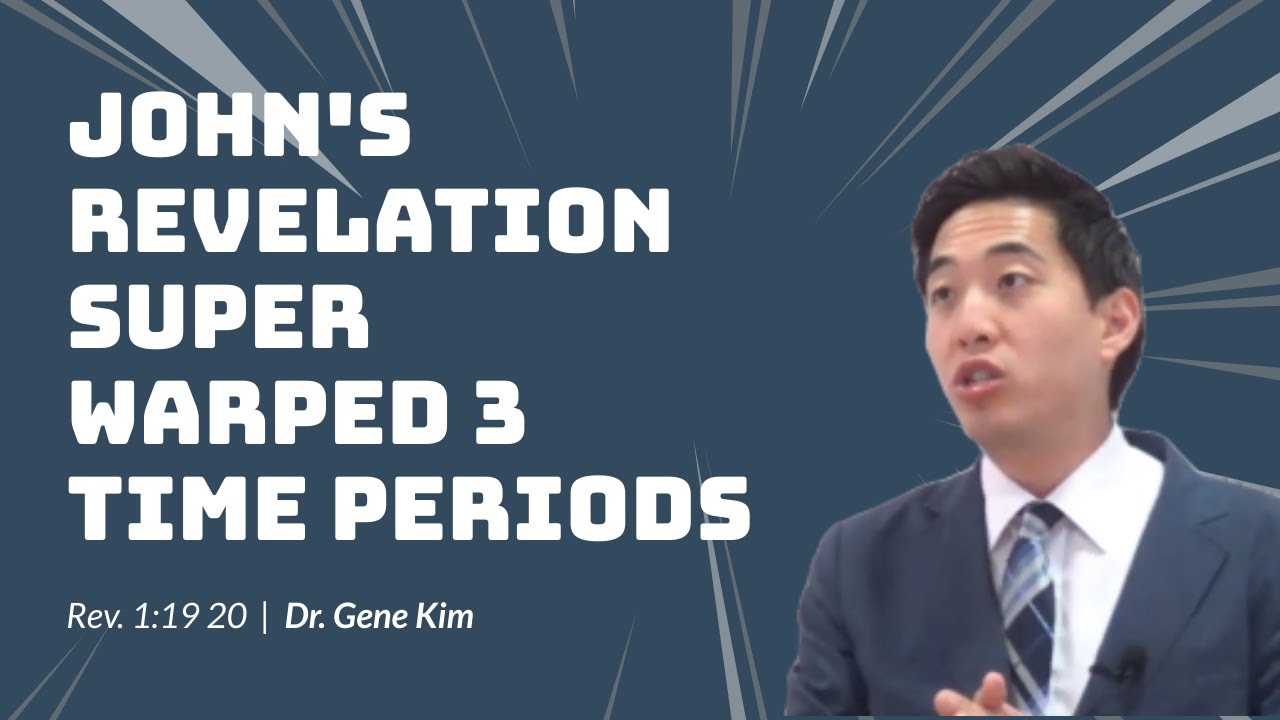Revelation 1:19 “Write the things which thou hast seen, and the things which are, and the things which shall be hereafter;”
Scofield, Larkin, and classical dispensationalists say that:
‘hast seen’ is referring to Revelation chapter 1 because in Revelation 1:12 John saw the seven golden candlesticks and Jesus.
‘things which are’ they claim is chapter 2-3. In Revelation 2:1, ‘unto the angel of the church of Ephesus write: These things saith…’ that’s present tense. This is referring to the churches.
‘hereafter’ would be the entire line of tribulation, chapter 4-22. This seems to make a lot of sense especially when we look at Revelation 4:1, ‘…come hither, and I will shew thee things which must be hereafter.’
There’s a different dispensation given by Ruckman, he points out the following:
- ‘hast seen’ is church age, ‘things which are’ is tribulation and ‘hereafter’ is Millennium.
- Chapters 1-3 represent the church age because chapters 2 and 3 talk about the church of Ephesus, Smyrna, etc.
- Chapters 4-19 – ‘things which are’ represent tribulation.
- Chapters 20-22 ‘hereafter’ represent after the tribulation which is Millennium.
When John was writing the book of Revelation, he’s here with us at the church age but God pushed him forward to the timeline of tribulation. So if John is in the tribulation timeline, what’s before him is the church age, what’s the future for him is the Millennium. This seems to be supported because it is true that according to Scofield and Larkin, the things he saw were the seven golden candlesticks and they represent the seven churches.
God said to John to write the things that thou hast seen… In Revelation 1:20,
“The mystery of the seven stars which thou sawest in my right hand, and the seven golden candlesticks.”
What John saw, what he already saw, was those seven golden candlesticks and seven stars.
“The seven stars are the angels of the seven churches: and the seven candlesticks which thou sawest are the seven churches.”
‘which thou sawest’ is past tense, that’s why it seems to make sense that what he already saw, hast seen, is referring to the seven churches. If we put it that way then chapters 2 and 3, when we talk about these seven churches, it’s already in the past.
This is very interesting where we can see different perspectives in the scriptures and it’s to us now where we’re going to have to look it up ourselves and the Lord will show us. One thing we’re going to learn is that as we cover more and more deep doctrine, we’re not going to know everything. Why does God do that? Because 1 Corinthians 13:9-10, God wants us to keep studying the Bible, this book is literally an endless treasure.
Revelation 1:20 “The mystery of the seven stars which thou sawest in my right hand, and the seven golden candlesticks. The seven stars are the angels of the seven churches: and the seven candlesticks which thou sawest are the seven churches.”
“The mystery of the seven stars which thou sawest in my right hand, and the seven golden candlesticks.”
Now God will tell us what they are. Let the Bible interpret itself.
“The seven stars are the angels of the seven churches: and the seven candlesticks which thou sawest are the seven churches.”
What’s interesting is that when we start off in chapter 2, ‘unto the angel of the church of Ephesus…’, these 7 stars are simultaneous in line with the 7 candlesticks. There’s an angel or a star over a church. God gave the star physically similar to how the star of Bethlehem was over a location, it’s the same thing right here, we see a star over a location. That’s very possible in the Bible that sometimes angels can appear as stars over a location to represent something. That’s why angels are not accurately termed as messengers, it’s more accurately termed as a representative, that’s what Dr. Ruckman believed in.
What’s interesting is that these angels are stars and that matches with the book of Job where the morning stars and the sons of God shouted for joy. These morning stars and sons of God are referring to angels. Some people teach that the sons of God are referring to a godly line of Seth and the sons of man are referring to a line of Cain, that sounds nice and pretty but it’s totally wrong.
Revelation 1:20 shows the stars are referring to angels. In Job 1, the sons of God are representing themselves before God Almighty at His throne, these are referring to angelic, celestial beings, not just normal humans.


